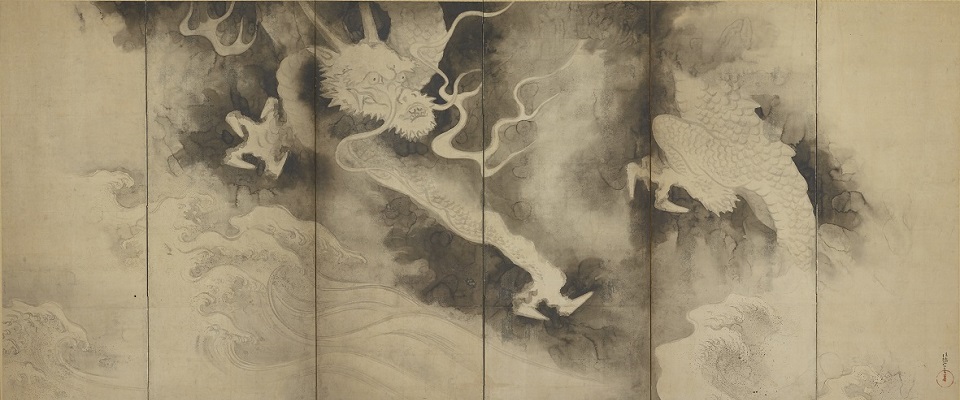Inkwork
Japanese artists were known for using media appropriate for the subject matter. Images depicting traditional Japanese narrative tales typically were rendered in opaque colors with outlines created in ink and later obscured by color overlay. Ink monochrome was closely associated with Chinese styles, particularly those transported to Japan via Zen Buddhism. Ink-based forms created with modulated strokes and layered washes suggested introspection and spiritual exploration.
In his application of the tarashikomi technique—random pools of pigment and ink—Sōtatsu subtly subverted the tradition. He used ink to depict the ordinary subjects of everyday life—puppies and plants—in a style that took on an allusive ambiguity. Instead of the solid, opaque colors traditionally associated with narrative painting, Sōtatsu used pooled ink and randomly changing color fields to indicate the underlying Buddhist theme: the unreliability of the visual world.
Explore
Galleries »
Flowers and Grasses of the Four Seasons
Right Screen »
Left Screen »
Timeline »
Rotation Schedule »

















